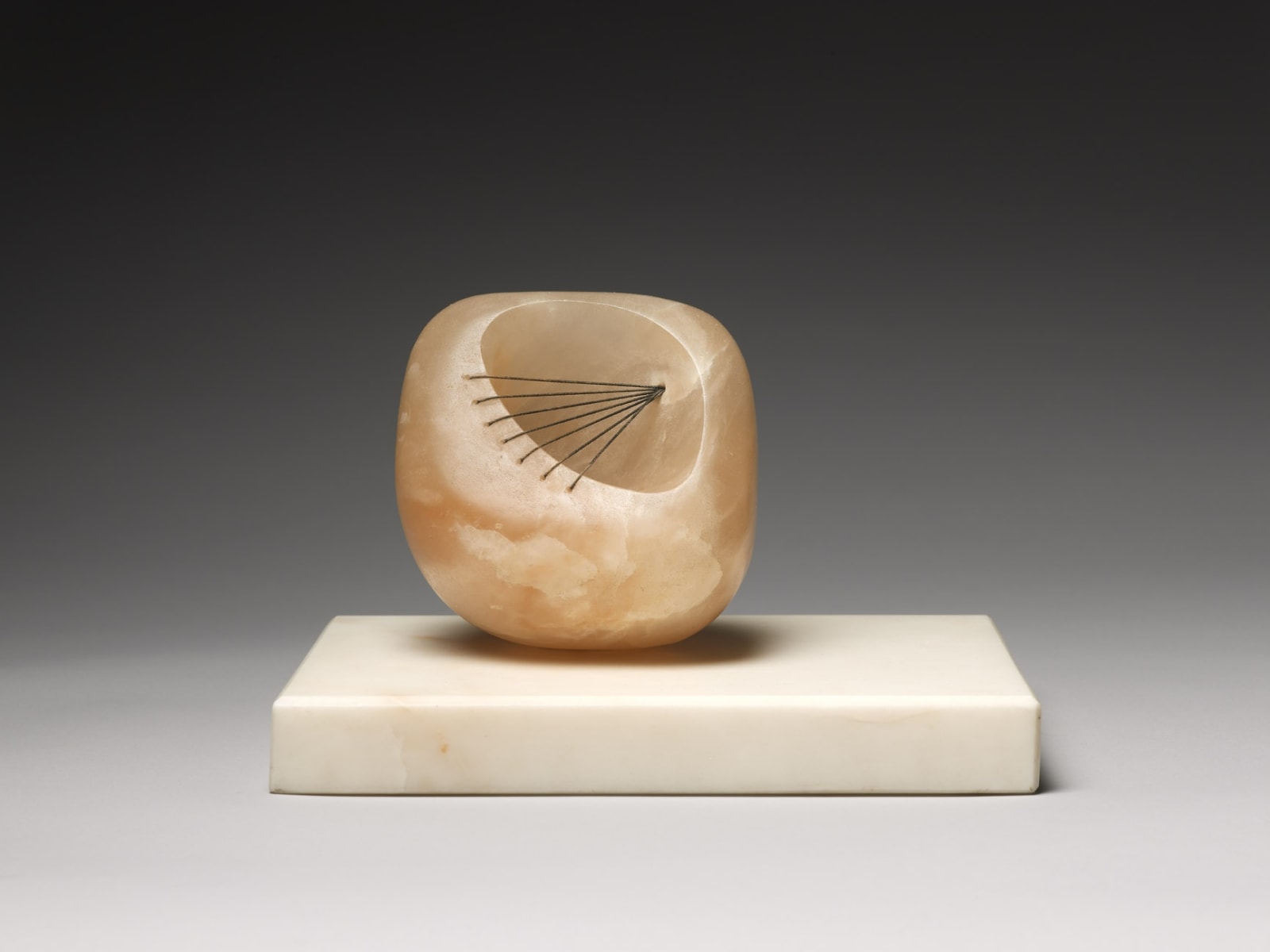Barbara Hepworth 1903-1975
base: 1 ½ x 10 ¾ x 8 ¼ inches / 3.75 x 27.25 x 21 cm
Barbara Hepworth created more than 600 sculptures over the course of her career. From around 70 carved from alabaster, this work is the only sculpture in this medium to include string, and is also the only sculpture from Hepworth's entire oeuvre that makes use of black string, marking it as a unique and rare object.
Hepworth first introduced the 'hole' into her sculpture in Pierced Form, 1931. On creating this, the artist wrote that she '…had felt the most intense pleasure in piercing the stone in order to make an abstract form and space; quite a different sensation from that of doing it for the purpose of realism.' [1] The treatment of the hole in Small Stone with Black Strings demonstrates a marked development from Hepworth's first pierced form. More than simply perforating the sculpture from front to back, the hole appears to grow and expand as it travels up through the interior of the form, creating an irregular ovoid-shape in the top of the sculpture's surface, which is echoed in a similarly shaped recess to the side. In the late 1930s, inspired by an interest in mathematical models, Hepworth began incorporating string into her sculpture in order to explore the tensions created by this now all-important 'space.' We see this wonderfully in Small Stone, where the impact of its inclusion is born out of contrasts; it is dark where the alabaster is light, pulled taut where the sculpture's edges are soft, and it cuts through the space, in finite lines, where the form is characterised by organic rhythms. Ultimately, for Hepworth, the string was a reflection of her response to the landscape. 'The strings were the tension I felt between myself and the sea, the wind or the hills.' 2
One of the most striking characteristics of this piece is its iridescent quality, an effect of both the openness of the form and the material from which it has been made. The wonderful hues of the alabaster, as well as its translucency, come to life as light reflects from both the interior and exterior walls, creating the effect of a luminous, treasure-like object that recalls the sea and sand-weathered pebbles and shells.
1 Kosme de Baranano, 'Barbara Hepworth, magical landscape', Barbara Hepworth, Institut Valencia d'Art Modern, Valencia, 2004, unpaginated
2 A.M. Hammacher, Barbara Hepworth, Thames and Hudson, London, 1968, p92
Provenance
Henry Morris
Sydney Box
Lady Gardiner (née Muriel Box)
Nathan and Marion Smooke, California
Private Collection, USA
Offer Waterman, London
Private Collection, UK
Exhibitions
London, Lefevre Gallery, Barbara Hepworth, October 1952, cat no.14, not illus
Los Angeles, Los Angeles County Museum of Art, Degas to Picasso: Modern Masters from the Smooke Collection, 16 April-28 June 1987, p51, illus colour
Wakefield, The Hepworth Wakefield, Barbara Hepworth: Art & Life, retrospective exhibition, 21 May 2021 - 27 February 2022, touring to:
Edinburgh, Scottish National Gallery of Modern Art, 9 April - 2 October 2022
Literature
J.P. Hodin, Barbara Hepworth, Lund Humphries, London, 1961, cat no.185, not illus
Join our mailing list
* denotes required fields
We will process the personal data you have supplied to communicate with you in accordance with our Privacy Policy. You can unsubscribe or change your preferences at any time by clicking the link in our emails.
